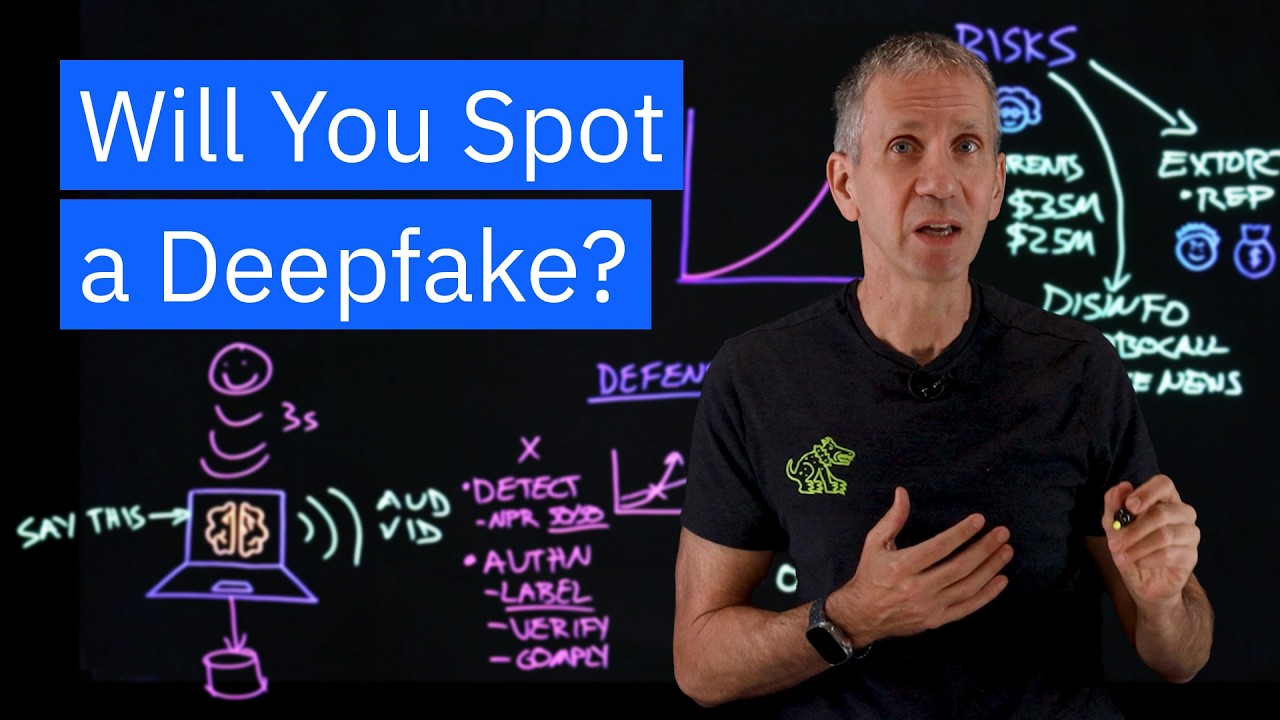In the video, Jeff discusses the growing accessibility and sophistication of deepfake technology, highlighting its potential for misuse in financial fraud and disinformation, such as manipulating voices for scams or misleading voters. He emphasizes the importance of education, awareness, and proactive measures to defend against deepfakes, urging individuals to remain vigilant and verify information to navigate this evolving threat.
In the video, Jeff introduces the concept of deepfakes by demonstrating a deepfake of his own voice, generated using AI technology. He explains that deepfakes can be created with minimal audio samples, sometimes as little as three seconds, allowing for the generation of convincing audio and video that mimics real individuals. This technology is becoming increasingly accessible and sophisticated, raising concerns about its potential misuse.
Jeff outlines several risks associated with deepfakes, starting with financial fraud. He describes scenarios such as the “grandparent scam,” where a deepfake of a grandchild’s voice is used to manipulate an elderly relative into sending money. He also highlights cases where corporations have fallen victim to deepfake scams, resulting in significant financial losses. These incidents illustrate how deepfakes can be exploited for malicious purposes, affecting individuals and organizations alike.
Another major risk discussed is the potential for disinformation. Jeff cites an example from a U.S. presidential election where a deepfake robocall impersonated the president, misleading voters about their voting rights. He warns that deepfakes could be used to create damaging fake news or manipulate public perception, leading to severe consequences in political and corporate contexts. The mere existence of deepfakes creates uncertainty, which can undermine trust in media and legal evidence.
In terms of defense against deepfakes, Jeff expresses skepticism about relying solely on technology to detect them, as detection tools have not proven to be reliable. He emphasizes the need for education and awareness, suggesting that people should be informed about the capabilities and risks of deepfakes. He advocates for a healthy skepticism towards media, encouraging individuals to verify information through alternative communication methods, especially when high stakes are involved.
Finally, Jeff suggests proactive measures, such as establishing code words among family members to verify requests for money or sensitive information. However, he cautions that even these measures may not be foolproof due to advanced techniques that can defeat such safeguards. He concludes by stressing the importance of staying informed and vigilant in the face of evolving deepfake technology, urging viewers to consider themselves forewarned and prepared to navigate this new landscape of digital deception.
